
Figure 1. Distribution of ODC trainees around the world from 2011 to 2021
1.Training Lecture
After 10th anniversary opening ceremony of UNESCO/IOC-ODC Center of 5 July, 2021, the two-week training course started. Due to the global situation of COVID-19, only applicants based in China participated in the onsite training this year, and online training used by webex.
After 10th anniversary opening ceremony of UNESCO/IOC-ODC Center of 5 July, 2021, the two-week training course started. Due to the global situation of COVID-19, only applicants based in China participated in the onsite training this year, and online training used by webex.

Figure 2. Opening Ceremony
On 6 July, 2021, Prof. Tianjun Zhou gave lectures on the East Asian climate response to natural and anthropogenic forcing and The Paris Agreement and climate change over global monsoon regions. Prof. Tianjun Zhou discussed about the reasons behind the strengthening and weakening tendencies of the East Asia Monsoon and the observed drying trend in global land monsoon precipitation’s attribution to anthropogenic forcing.

Figure 3. Prof. Tianjun Zhou from LASG, Institute of Atmospheric Physics, Chinese Academy of Sciences, China
On 7 July, 2021, Prof. Tal Ezer gave lectures on the air-sea interaction for hurricane modeling and global/regional sea level rise in the morning session. He presented that the air-sea coupled model could provide a better prediction on the intensity of hurricane. He also mentioned about the impact of the gulf stream of Mexico on the sea level rise near the American shore. Prof. Tal Ezer stated that the coupled model of POM and WRF actually underestimated the storm surge compared with just using the POM model. On 8 July, Prof. Tal Ezer continued his presentation on the air-sea interaction for hurricane modeling and global/regional sea level rise. Prof. Tal Ezer stated the importance of predicting future sea level rise by listing some hazardous effects it brought to us. He discussed about the challenges facing in the process of predicting future sea level rise. Prof. Tal Ezer’s lecture focused on the sea level rise aspect from climate change and its impact from local examples to global variability.

Figure 4. Prof. Tal Ezer of Ocean, Earth & Atmospheric Sciences, Old Dominion University, USA
On the afternoon of 7,July, 2021. Prof. Fangli Qiao gave lectures on the development of Ocean Forecasting System (OFS) and its applications. Prof. Fangli Qiao discussed about two high uncertainties for ocean circulation numerical model: ocean mixing and air-sea fluxes. Wave effect was introduced into the model to produce better results. There are three physical processes related to ocean waves: nonbreaking surface wave-induced vertical mixing, Stokes drift and sea spray. Prof. Fangli Qiao introduced the Ocean Forecasting System, and by incorporating the three wave-related factors into the system, it provided much better prediction results for high intensity typhoon.
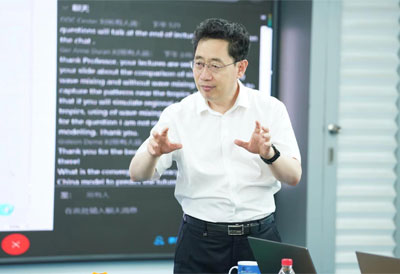
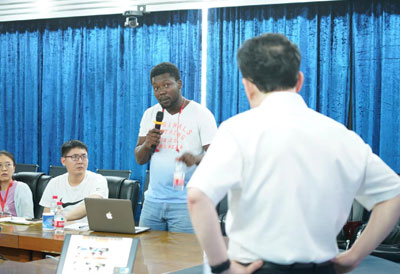
Figure 5. Prof. Fangli Qiao from the First Institute of Oceanography, MNR, China
On 9 July, 2021, Prof. Shoshiro Minobe gave lectures on the introduction to CMIP multi-model analyses. In the morning session, Prof. Shoshiro Minobe discussed about the coupled CMIP models and the CMIP forcing. He provided a detailed introduction for the CMIP6 models and the use of scenarios in CMIP. In the afternoon session, Prof. Shoshiro Minobe shared some of his research results including the application of CMIP6 models, sea level rise in western boundary regions, realtion between ocean interior sea level rise and western boundary sea level rise and etc. In the last part, Prof. Shoshiro Minobe demonstrated some implementations of the Python scripts for CMIP6 data.
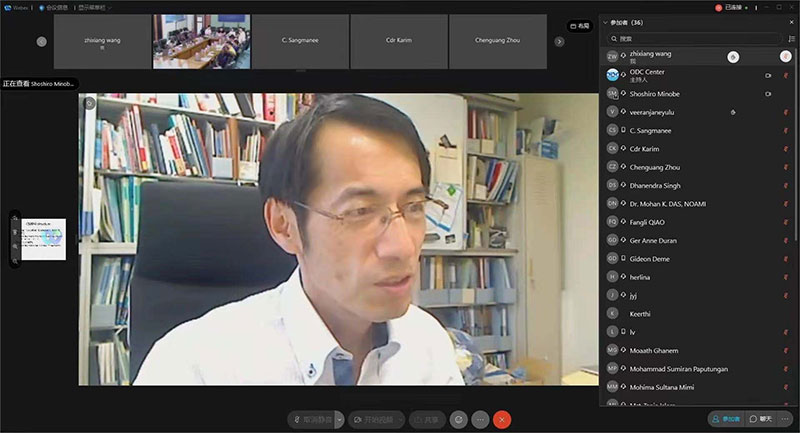
Figure 6. Prof. Shoshiro Minobe from Hokkaido University, Japan
On 12 and 13 July,2021, Prof. Antonietta Capotondi gave lectures on ENSO mechanisms and diversity: local and extratropical influences and simulation by climate models. She introduced the key ENSO characteristics and their representation in models. She discussed about the tropical ENSO dynamics including the evolution of equatorial heat content and wind forcing. She also talked about the ENSO diversity and the precursors of ENSO diversity.

Figure 7.Prof. Antonietta Capotondi from Cooperative Institute for Research in Environmental Sciences, USA
On the afternoon of 13 and 14, July, 2021. Prof. Dave Bi gave lectures on the new generation Australian community climate and earth system simulator coupled model. He provided further information on the ACCESS system. He presented some future developments of ACCESS and shared some experiment results regarding SST and its critical influence on ENSO variability.

Figure 8. Prof. Dave Bi from the Commonwealth Scientific and Industrial Research Organisation, Australia
On 14 July, 2021, Prof. Yajuan Song from First Institute of Oceanography, MNR, China gave lectures on seasonal climate prediction of Northwest Pacific based on FIO-ESM model. She discussed about the earth system climate, climate change and climate variability. She provided some predictable patterns of climate in ENSO and monsoon using the FIO-ESM model.
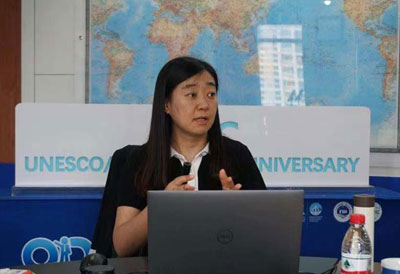

Figure 9. Prof. Yajuan Song from First Institute of Oceanography, MNR, China
In the afternoon session, Prof. Fredolin Tangang from National University of Malaysia, Malaysia gave lectures on the coordinated regional climate downscaling experiment in the Southeast Asia. He shared some key findings on climate change and mentioned the importance of regional climate downscaling. He introduced the coordinated regional climate downscaling experiment (CORDEX) framework and its implementation and the simulation findings in Southeast Asia.
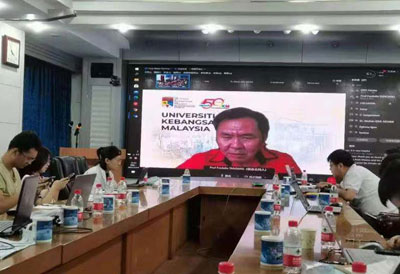
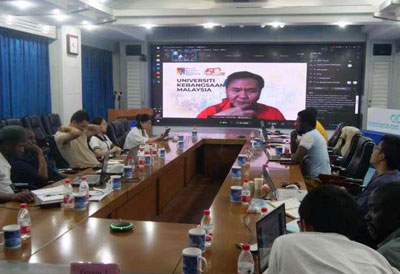
Figure 10. Prof. Fredolin Tangang from National University of Malaysia, Malaysia
On 15 July, 2021, Prof. Hong-Li Ren gave lectures on ENSO diversity: feature, mechanism, monitoring and prediction. Prof. Hong-Li Ren discussed about the feature and mechanism of the two ENSO types: the canonical or eastern Pacific (EP)-type and Modoki or central Pacific (CP) type. He also talked about the dynamical and statistical model predictability and the ENSO monitoring. In the afternoon session, Prof. Hong-Li Ren provided an introduction of MJO by including some key features and representative indices such as RMM. He then discussed about the MJO’s impacts and its operation in Beijing Climate Center (BCC) models.


Figure 11. Prof. Hong-Li Ren from Chinese Academy of Meteorological Sciences, CMA, China
Trainees have learned knowledge and improved practical operation ability in Regional Application of Coupled Climate Models through the lectures and practice exercises.
2. Forum for Early Careers Scientists
Besides the lectures and practical exercises, Forum for Early Career Scientists was also carried out to deepen understanding and promote cooperation during these two weeks, which included some activities such as trainee reports, group discussion and group reports.
2. Forum for Early Careers Scientists
Besides the lectures and practical exercises, Forum for Early Career Scientists was also carried out to deepen understanding and promote cooperation during these two weeks, which included some activities such as trainee reports, group discussion and group reports.
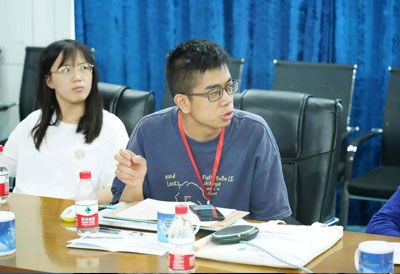

Figure 12. Dicuss questions
Figure 12. Dicuss questions
(1) Trainee ReportsDuring the training course, due to hybrids mode of online and onsite, we collected videos and share them online, 3 trainee reports were held. 31 trainees provided a video and ppt to introduce their research work related to the topic of this training course, their research area, academic achievements and preliminary idea for cooperation with other countries in the region. After the reports, other trainees could ask them questions. Through interaction, trainees have better known each other and found some common interests in research for discussion. The activities also promoted the understanding of each other and increased the trainee’s enthusiasm to grasp new knowledge from the training course.

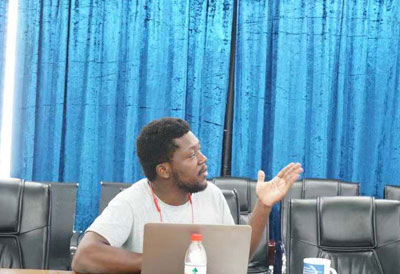
Figure 13. oral presentation
(2)Group discussion and reports
During the training course, all the trainees were divided into 10 groups, onsite were divided into 3 groups and online were into 7 groups. Trainees in each group completed the exercises, carried out group discussions, and prepared group reports. In addition, each group was required to make PPT together to introduce their group members, cooperation and new knowledge gained from the training course, results of their assignments and suggestions for future cooperation. The group discussion and reports provided more chance for the trainees to perform a first attempt to work together and some prospective cooperation in future research among them become more possible.
During the training course, all the trainees were divided into 10 groups, onsite were divided into 3 groups and online were into 7 groups. Trainees in each group completed the exercises, carried out group discussions, and prepared group reports. In addition, each group was required to make PPT together to introduce their group members, cooperation and new knowledge gained from the training course, results of their assignments and suggestions for future cooperation. The group discussion and reports provided more chance for the trainees to perform a first attempt to work together and some prospective cooperation in future research among them become more possible.
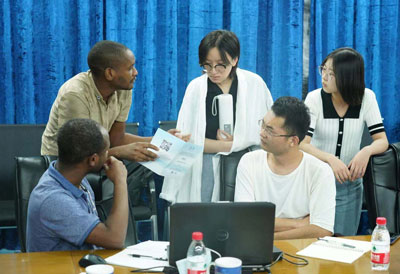

Figure 14. Group Discussion
3. Completion ceremony
The completion ceremony was held in the afternoon of 16 July, 2021. All the trainees, Prof. Fangli Qiao, Prof. Hong-li Ren, Dr. Yajuan Song and Dr. Xunqiang Yin attended the ceremony. Certifications was issued to those trainees who had completed all the courses. Group leaders, group secretaries and volunteers was issued a certification for their great contribution in this training course. Nine trainees (Mr.Augustine Onyango, Mr.Tolulope Emmanuel Oginni, Ms.Hui Ren, Mr.Emmanuel Eresanya, Mr.Eghosa Igun, Mr.Chalermrat Sangmanee, Mr.Yee Kwang Sim, Mr.Jan Muhammad and Mr.Mohan Kumar Das) had been awarded as the best trainees based on their performance during these 2 weeks. Special certifications had been issued to them by Prof. Fangli Qiao, Prof. Hong-li Ren and Dr. Yajuan Song during completion ceremony. The lectures, exercises and Forum for Early Career Scientists in training course have helped the trainees improve their understanding of the Regional Application of Coupled Climate Models and strengthen the personal friendships among participants from different parts of the world.
The completion ceremony was held in the afternoon of 16 July, 2021. All the trainees, Prof. Fangli Qiao, Prof. Hong-li Ren, Dr. Yajuan Song and Dr. Xunqiang Yin attended the ceremony. Certifications was issued to those trainees who had completed all the courses. Group leaders, group secretaries and volunteers was issued a certification for their great contribution in this training course. Nine trainees (Mr.Augustine Onyango, Mr.Tolulope Emmanuel Oginni, Ms.Hui Ren, Mr.Emmanuel Eresanya, Mr.Eghosa Igun, Mr.Chalermrat Sangmanee, Mr.Yee Kwang Sim, Mr.Jan Muhammad and Mr.Mohan Kumar Das) had been awarded as the best trainees based on their performance during these 2 weeks. Special certifications had been issued to them by Prof. Fangli Qiao, Prof. Hong-li Ren and Dr. Yajuan Song during completion ceremony. The lectures, exercises and Forum for Early Career Scientists in training course have helped the trainees improve their understanding of the Regional Application of Coupled Climate Models and strengthen the personal friendships among participants from different parts of the world.

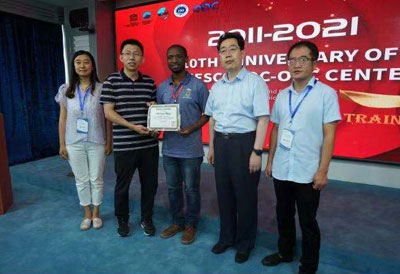





Figure 15. Certification for Onsite trainees
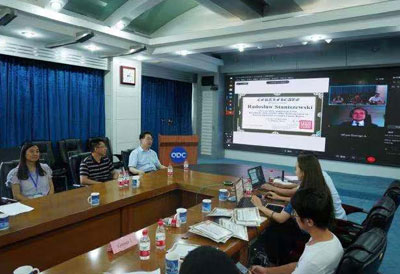



Figure 16. Certification for Online trainees
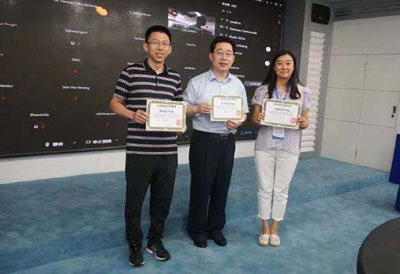
Figure 17. Certification for Experts
